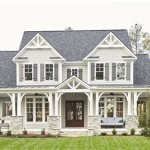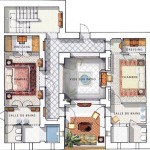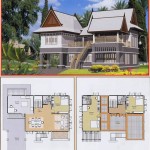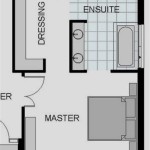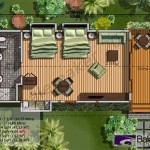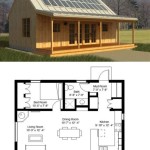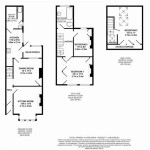The Essential Charm of Traditional English Country House Plans
The timeless elegance and rustic charm of traditional English country house plans have captivated homeowners for centuries. Embodying the quintessential English countryside, these homes exude a sense of warmth, history, and architectural grandeur.
Symmetrical Facades
One defining characteristic of traditional English country house plans is their symmetrical facades. The front elevation is typically divided into two identical halves, with a central doorway flanked by windows on both sides. This creates a balanced and harmonious exterior that is both aesthetically pleasing and imposing.
Steep Pitched Roofs
Another essential element is the steep pitched roof. Sloping sharply towards the eaves, these roofs provide ample headroom in the upper stories and contribute to the home's overall grandeur. The roof is often covered in slate or tiles, adding a touch of traditional charm and weather resistance.
Ornate Windows
Traditional English country house plans feature a generous amount of windows, allowing natural light to flood the interiors. The windows are typically mullioned, with vertical dividing bars creating small panes of glass. This intricate detailing adds a touch of sophistication and character to the exterior.
Bay Windows
Bay windows are a common feature in country house plans, providing additional light and space in the rooms they occupy. Recessed into the front of the house, these windows create a cozy nook that can be used for reading, relaxing, or simply enjoying the views of the surroundings.
Gabled Dormers
Gabled dormers are another charming feature found in many country house plans. These small, triangular windows project from the roof, providing extra headroom and natural light in the attic. They often feature decorative finials or other ornamentation, adding a touch of whimsy to the exterior.
Brick or Stone Exteriors
Traditional English country house plans typically have exteriors made of brick or stone. These materials not only provide durability and longevity but also evoke a sense of history and tradition. Brick walls can be arranged in various patterns, such as Flemish bond or English bond, creating visual interest. Stone exteriors, on the other hand, convey a more rustic and rugged appearance.
Landscaped Gardens
No traditional English country house plan would be complete without extensive landscaped gardens. Verdant lawns, colorful flower beds, and mature trees create a serene and picturesque setting that complements the home's exterior beauty. Formal gardens, with their intricate paths and manicured hedges, are particularly popular in country estates.

English Mansion House Plans From The 1800s Floor Country Plan

1920s English Cottage Small Homes Books Of A Thousand R Tissington Floor Plans Vintage House

Home Builders Catalog 1929 Duffy American Residential Architecture English Eclectic Cottage Vintage House Plans Floor

English Cottage House Plans Storybook Style

Luxury European Manor House Plans And Cau

English Cottage House Plans Storybook Style

Archi Maps Architectural Floor Plans Architecture Plan Vintage House

Traditional Timber Framed Home Designs Scandia Hus

Plan 19243gt English Country Cottage Style House Plans

English Cottage House Plans Floor Designs Houseplans Com


